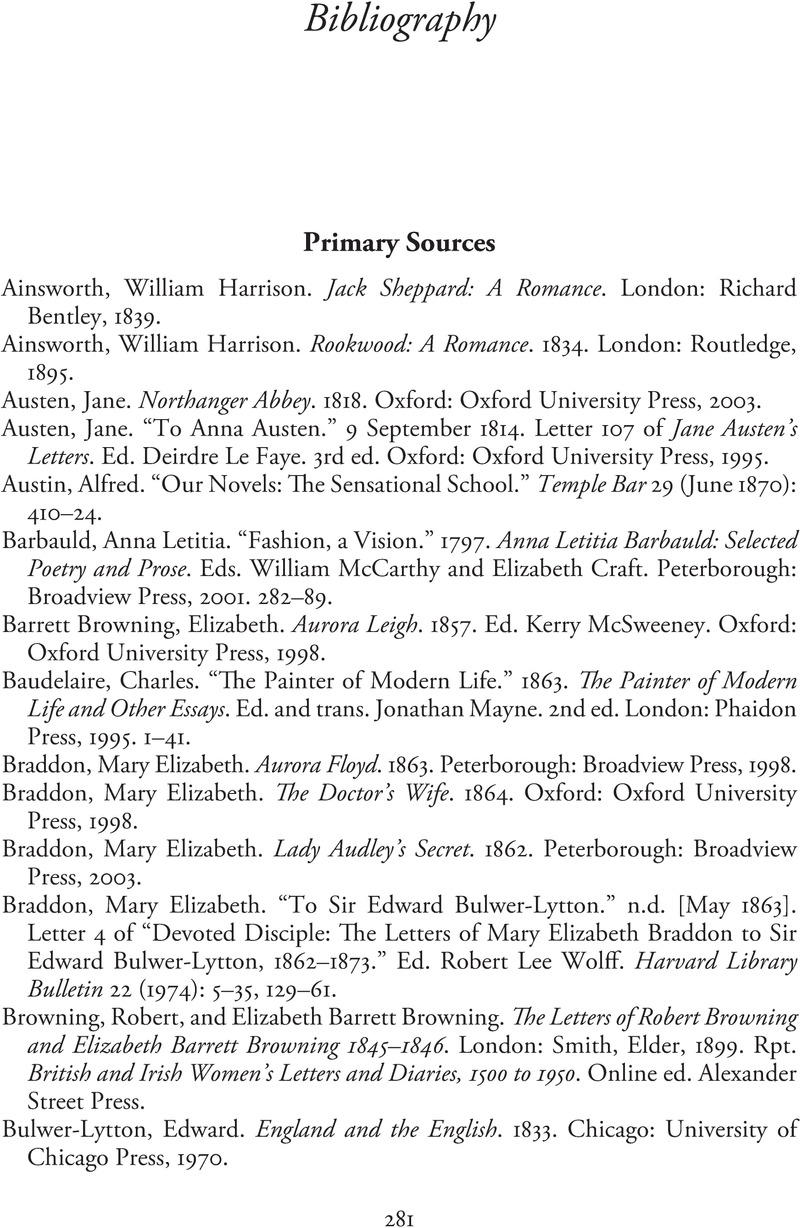Book contents
- Fashionable Fictions and the Currency of the Nineteenth-Century British Novel
- Cambridge Studies in Nineteenth-Century Literature and Culture
- Fashionable Fictions and the Currency of the Nineteenth-Century British Novel
- Copyright page
- Contents
- Figures
- Acknowledgements
- Introduction: Fashion and Its Vicissitudes
- Part I The Silver-Fork Novel and the Transient World
- Part II Demotic Celebrities
- Part III Hypercurrency and the Sensation Novel
- Bibliography
- Index
- Cambridge Studies in Nineteenth-Century Literature and Culture
- References
Bibliography
Published online by Cambridge University Press: 11 May 2023
- Fashionable Fictions and the Currency of the Nineteenth-Century British Novel
- Cambridge Studies in Nineteenth-Century Literature and Culture
- Fashionable Fictions and the Currency of the Nineteenth-Century British Novel
- Copyright page
- Contents
- Figures
- Acknowledgements
- Introduction: Fashion and Its Vicissitudes
- Part I The Silver-Fork Novel and the Transient World
- Part II Demotic Celebrities
- Part III Hypercurrency and the Sensation Novel
- Bibliography
- Index
- Cambridge Studies in Nineteenth-Century Literature and Culture
- References
Summary

- Type
- Chapter
- Information
- Publisher: Cambridge University PressPrint publication year: 2023



